Descriptions by Fr. Nathan Zodrow, O.S.B., with the assistance of Br. Claude Lane, O.S.B., Br. Alfredo Miranda, O.S.B., and Br. Ambrose Stewart, O.S.B.
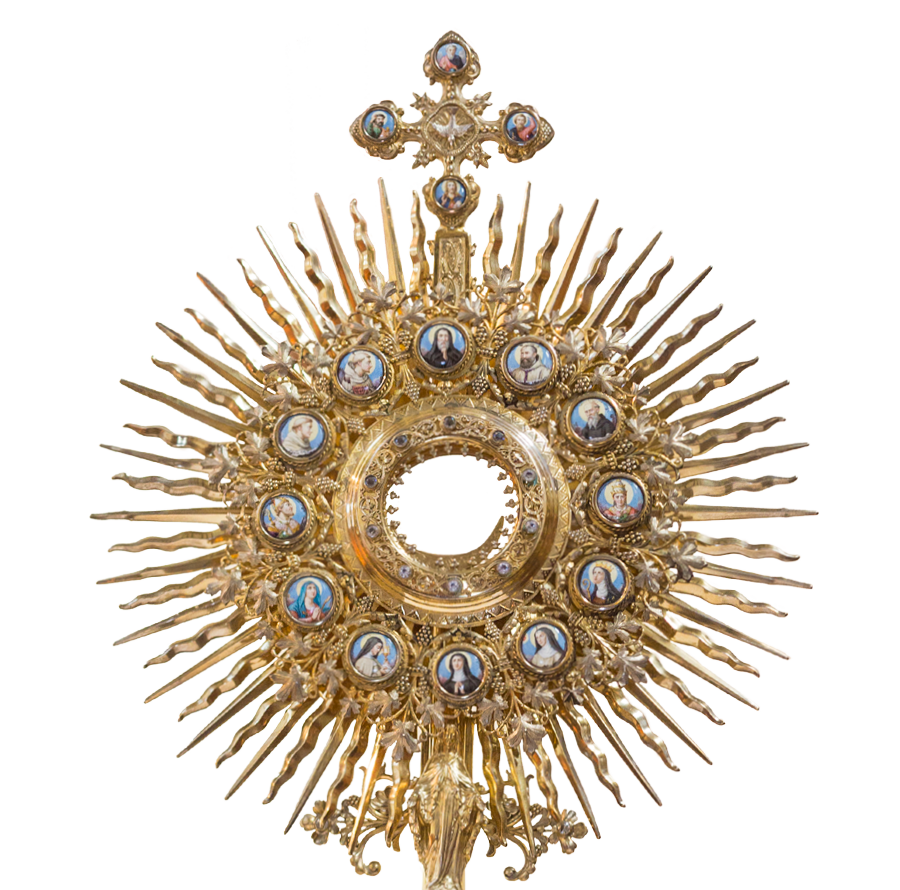
Fontgambault Monstrance
Province of Berry, France, c. 1894 | 35″ tall
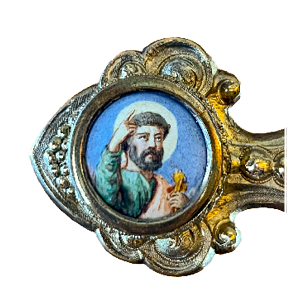
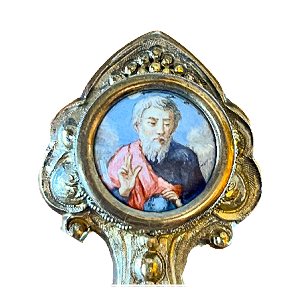
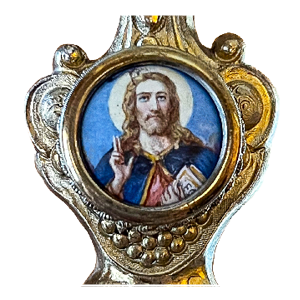
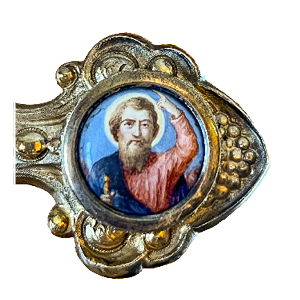
This large and richly detailed neo-gothic piece was originally given to the Trappist abbot Alberic in 1894 for his 25th anniversary of priestly ordination and 16th as abbot of Fontgambault Abbey. The gilded piece includes 25 large and small enamels and three statuettes of Cistercian saints. The uppermost section includes enamels of the Father (Ancient One) at the top, Christ (Ruler of All) at the bottom, and St. Peter (with keys) and St. Paul (with sword), both pointing upward toward the Father. Images of St. Benedict and St. Scholastica are included with Cistercian saints in the circle of enamels around the Luna, the glass-enclosed centerpiece. For its history, please see above Fontgamboult Abbey.
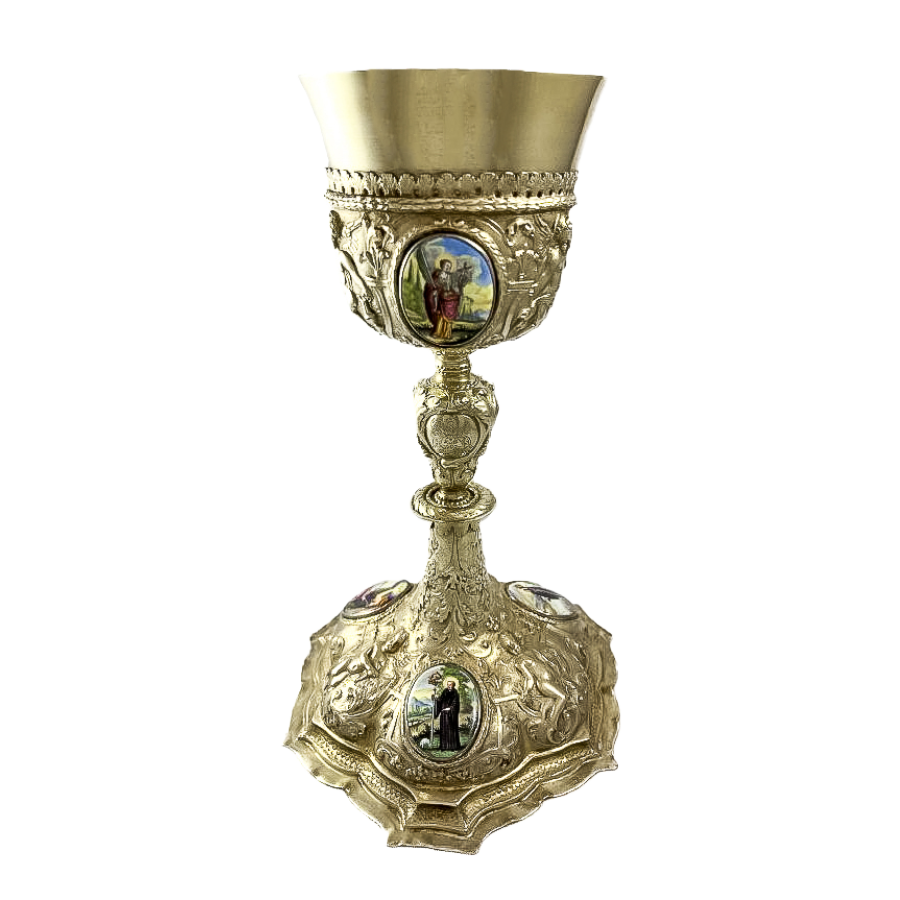
Engelberg Chalice
Augsburg, Germany, Ludwig Schneider, c 1706 | 10″ tall
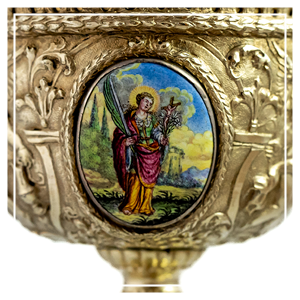
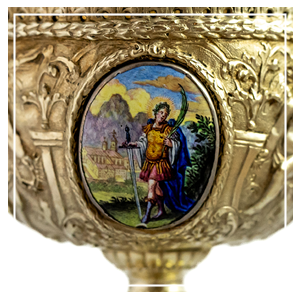
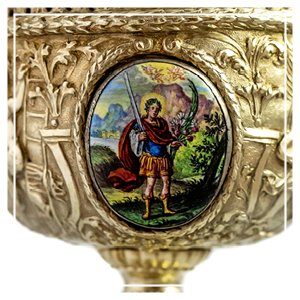
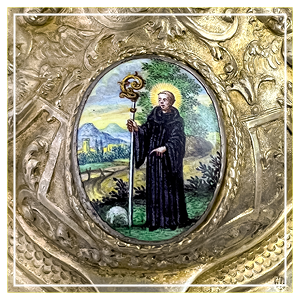
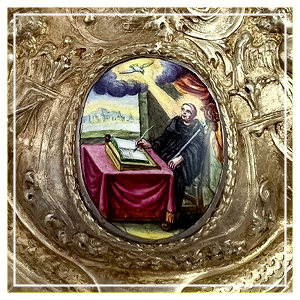
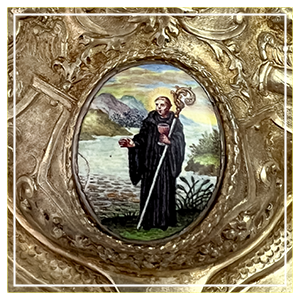
This ornate late Baroque chalice is a gold-plated masterpiece of metalwork and enamels. The enamels on the cup of the Engelberg chalice are St. Eugenius, a Roman soldier and martyr, St. Placida, martyr, and St. Maurice, martyr. The the foot of the chalice portrays Engelberg’s first three blesseds: Abbot Adelhelm, with a spring of water, Abbot Frowin, sitting at a desk, and Abbot Berchtold, holding a cup. The lower part of the cup, the body and base of the chalice, are designed with a chiseled low relief. The node is engraved with the coat of arms, indicating it was commissioned by Abbot Joachim Albini (1696 – 1724). The chalice was commissioned in Augsburg, Germany, and stamped with a pinecone hallmark (tree of life).
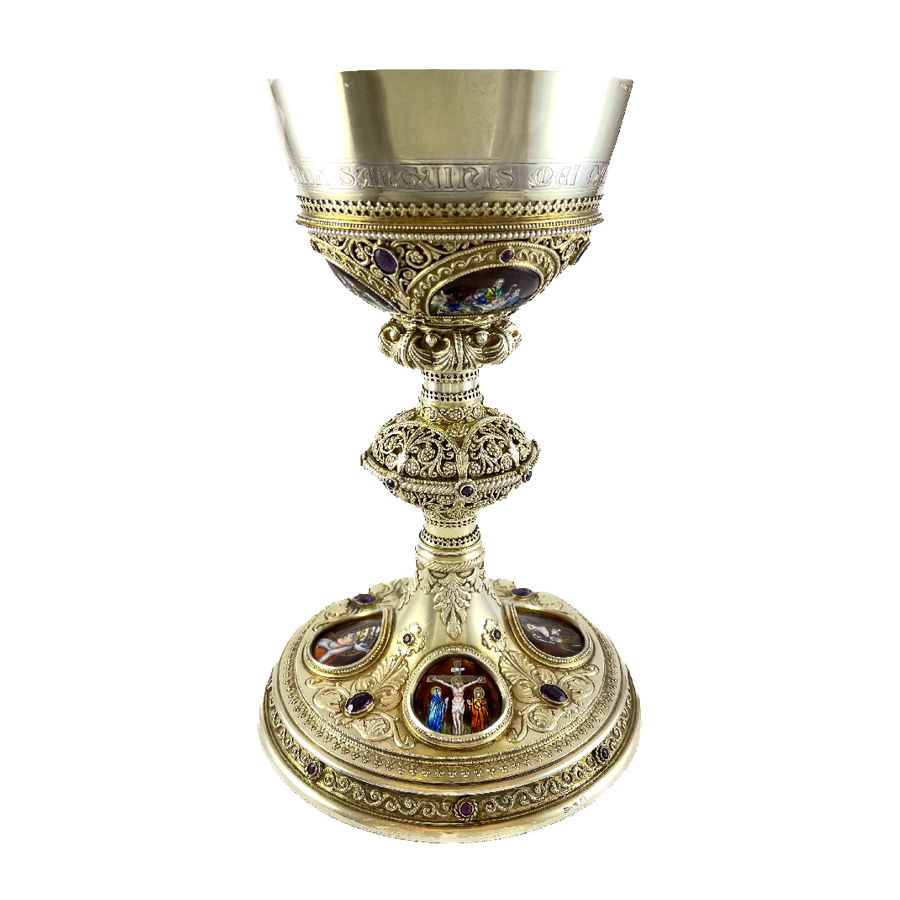
Chalice of Fr. Alcuin Heibel, O.S.B.
Made in France, c 1921 | 9″ tall
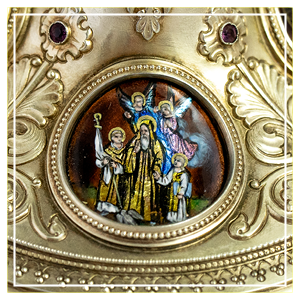
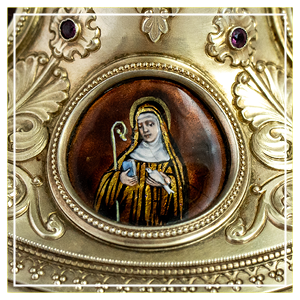
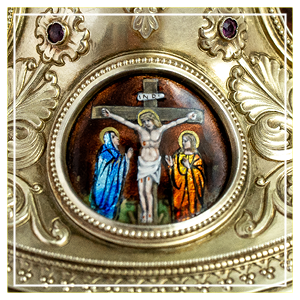
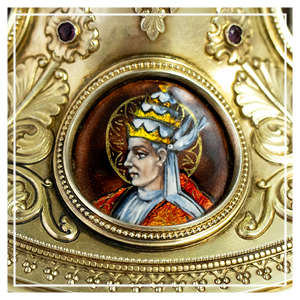
A neo-gothic chalice with four larger and four smaller enamels located at the base of the cup and on the foot respectively is of French origin. The enamels on the cup are of the Annunciation, Nativity, Last Supper, and the Resurrection. Those on the foot are the Death of St. Benedict, St. Scholastica, the Crucifixion, and Pope Gregory the Great. In the center or body of the chalice is an open filigree node while a smaller node is at the base of the cup. The smaller node’s design suggests a circle of adoring cherubs on which the cup rests. The chalice was given to Father Alcuin in memory of his parents for his ordination in 1921.
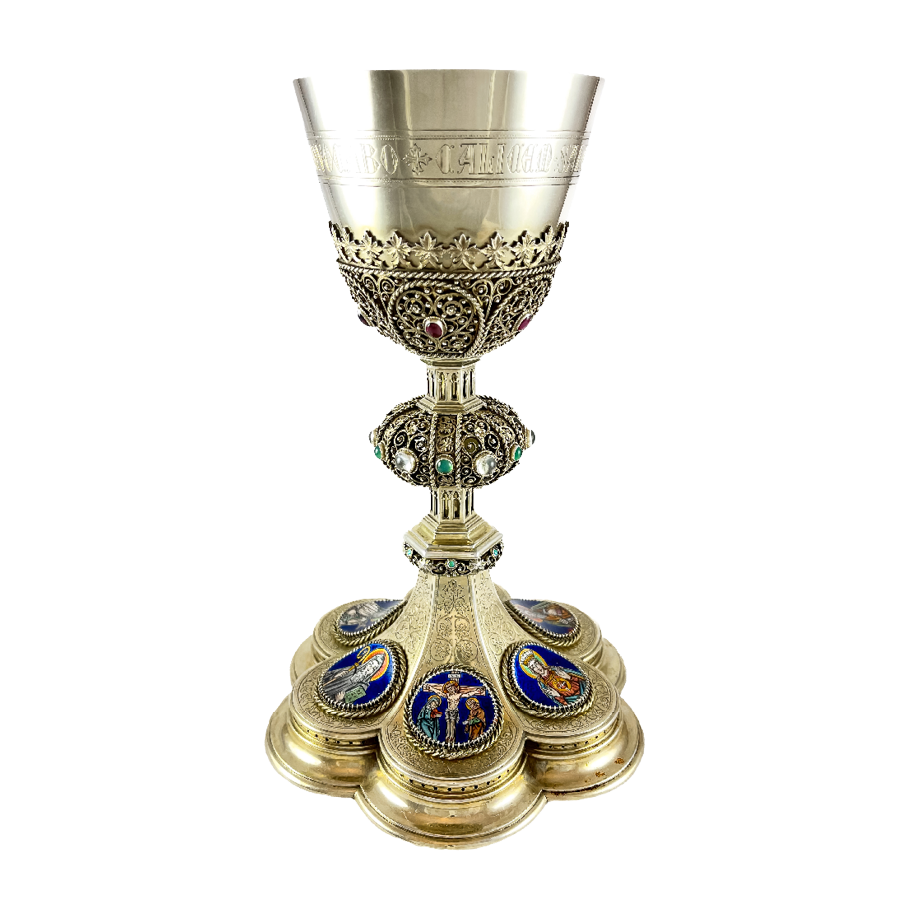
Chalice of Fr. Paul Benedict, O.S.B.
Made in Munster, Germany by R. Bruun, 1928 | 9″ tall
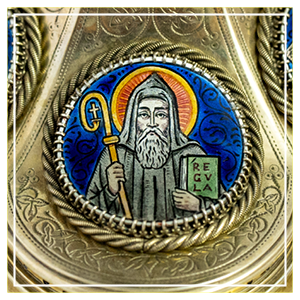
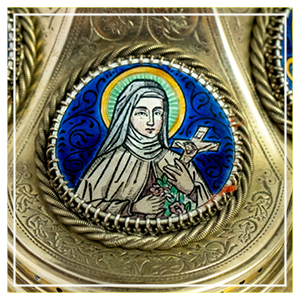
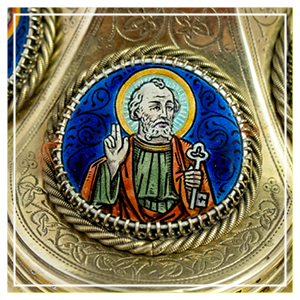
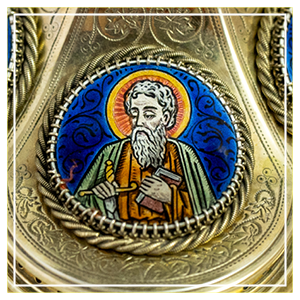
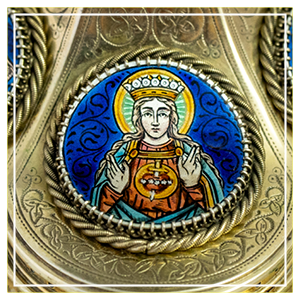
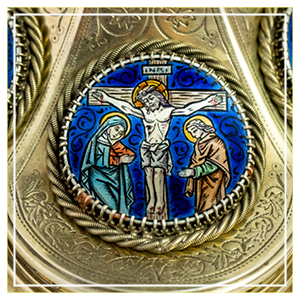
This neo-gothic design is suggested by the shape of the cup, the filigree on the cup base, and the node of the chalice. Six fired enamel medallions surround the base of the chalice: St. Benedict, St. Therese of Lisieux (canonized May 17, 1925), St. Peter with the key, St. Paul with a sword, the Immaculate Heart of Mary, and the Crucifixion. The chalice was given to Fr. Paul by his father, mother, and family for his ordination in 1928.
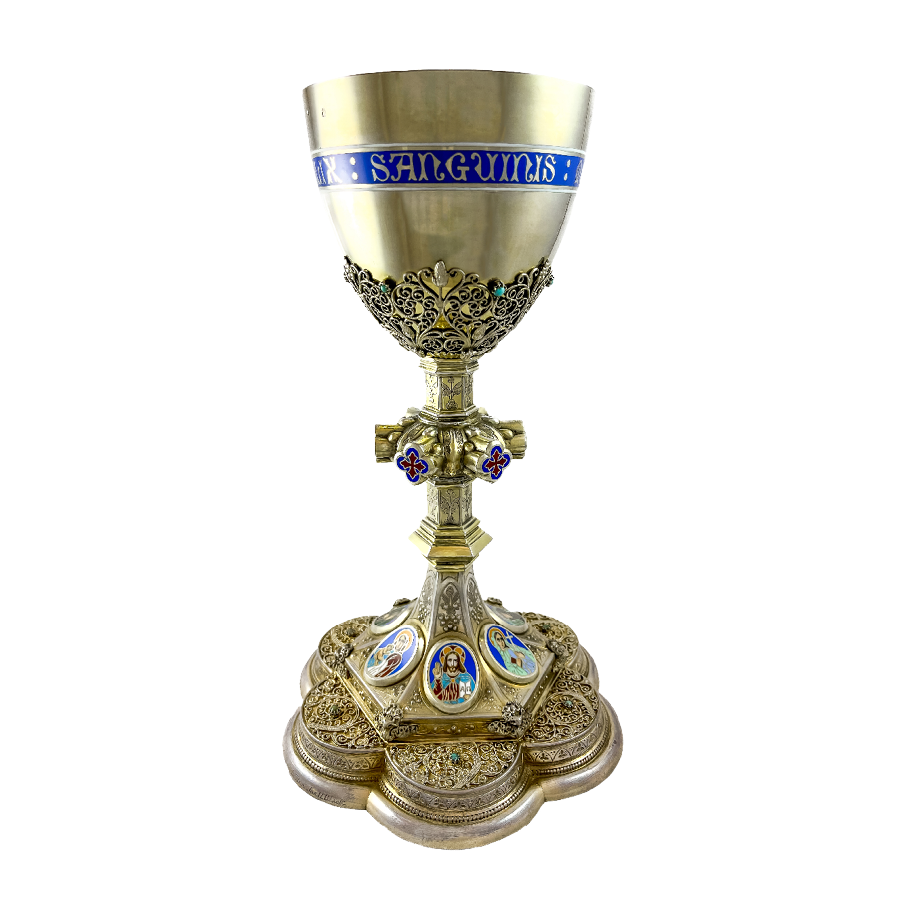
Chalice In Memory of Archbishop William Gross, CSSC
c. 1898 | 10 ¾″ tall
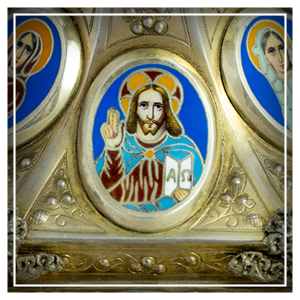
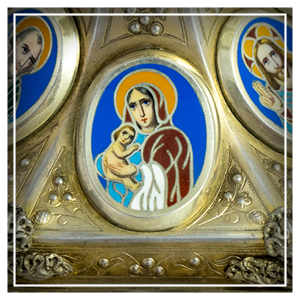
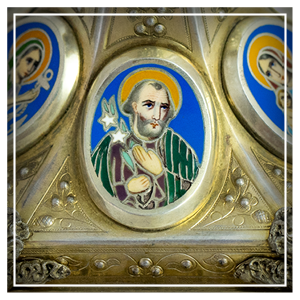
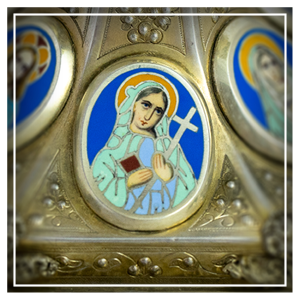
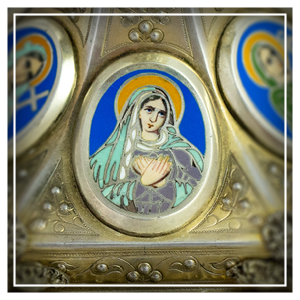
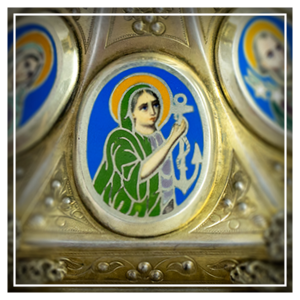
This neo-gothic chalice includes six fired enamel medallions at the base using the cloisonne technique of gold or silver wire to separate the various colors of the enamels: Christ displaying alpha and omega, Mary and Child, St. Joseph with a Lilly, and three women saints representing faith, hope, and charity. Filigrees decorate the base of the cup and the foot of the chalice. This chalice was given to Portland priest, Msgr. James Black in remembrance of William H. Gross, 3rd Archbishop of Oregon City (1885 – 1898).
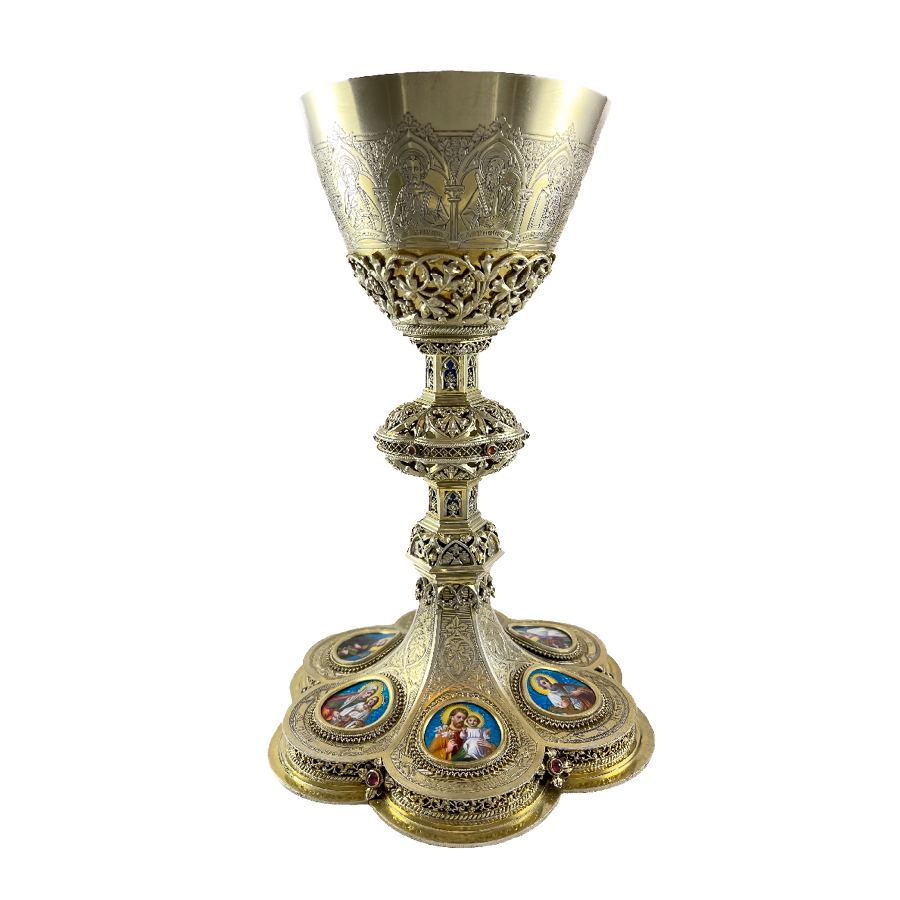
Chalice of Fr. Bonaventure Huesser, O.S.B.
Made in Fulda, Germany, by Wilhelm Rauscher, c 1911 | 9 ½″ tall
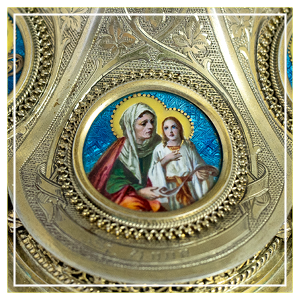
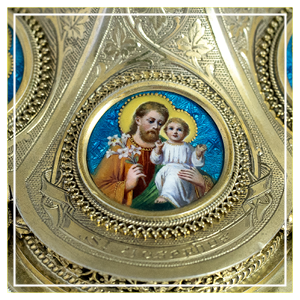
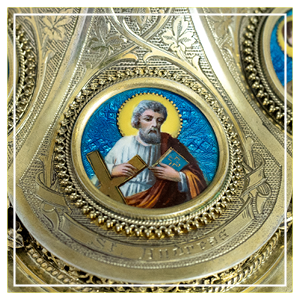
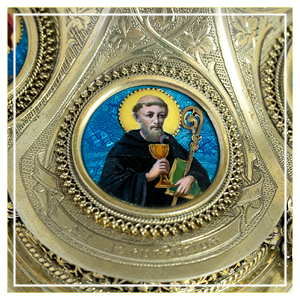
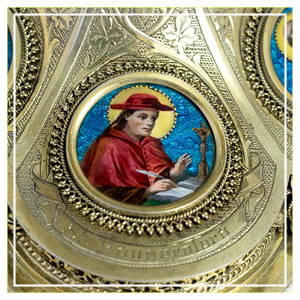
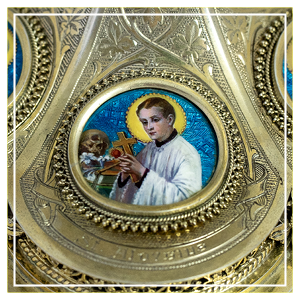
A neo-gothic design suggested by the shape of the cup and the plaited and open filigree as well as the six fired enamel medallions on the base: St. Ann and Mary, St. Joseph, St. Andrew, St. Benedict, St. Bonaventure, and St. Aloysius Gonzaga. Wilhelm Rauscher was an active goldsmith and jeweler from around 1892 to around 1925 in Germany. During his time, he became an official Papal Court Jeweler. Many of his larger pieces were marked, ‘Made in Germany Wilh. Rauscher Papstl Horjuwelier. Hof & Dom Goldschmied. Fulda’. This chalice was given by family members and friends to Fr. Bonaventure in memory of his parents for his 1911 ordination.
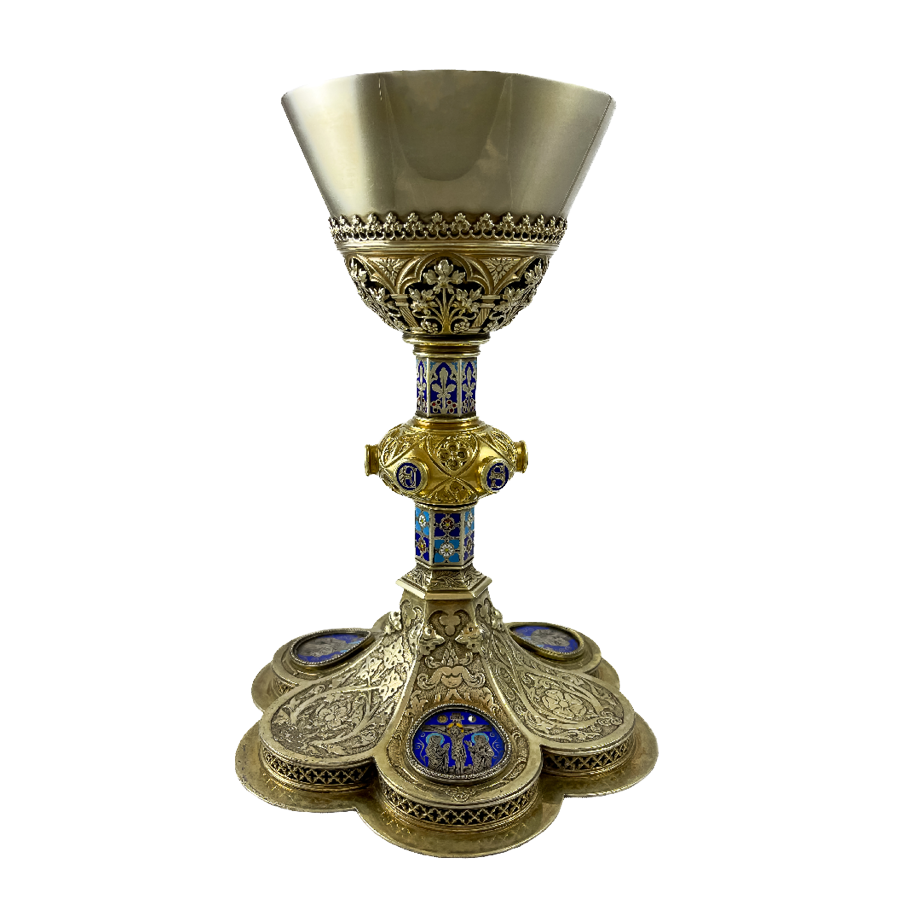
Chalice of Abbot Bernard Murphy, O.S.B.
Made in Regensburg, Germany, by JIU Deplaz, 1898 | 8 ½″ tall
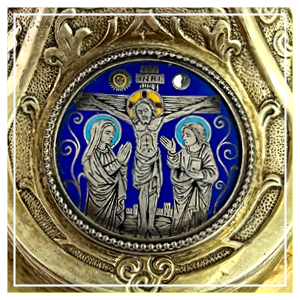
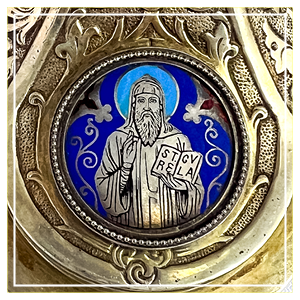
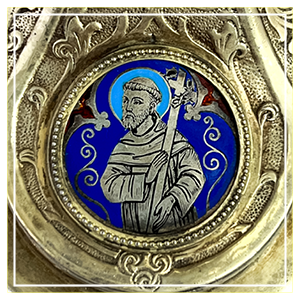
A neo-gothic chalice suggested by three fired enamel medallions adorning the base of the chalice: the Crucifixion, St. Benedict, and St. Maurus, surrounded by chiseled relief images on the base and node. The base of the cup is a closed filigree design with a meander crowning the top of the filigree. The chalice was given to Fr. Bernard Murphy, O.S.B., for his ordination in Rome in 1898. (Later, he was elected abbot III of Mount Angel Abbey, 1921 – 1934).











































